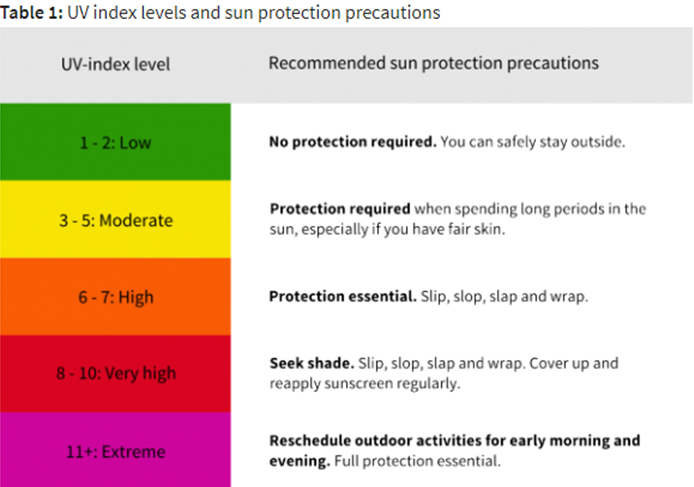Sun safety
20 Feb 2018, Industry Updates, Safety

With the sun hanging around across much of the country, it’s important that you be aware of the unique risks posed by high temperatures and how to deal with them
Under the Health and Safety at Work Act 2015, employers have a duty of care to protect their workers, so taking sun safety seriously is vital. Along with having one the world’s highest incidences of skin cancer, other sun-related issues include severe sunburn, dehydration, heat stroke and the increased likelihood of fatigue.
There are a number of different ways employers and their staff can minimise these risks, starting with following basic rules such as ‘slip, slop, slap’.
When it comes to sunblock, the Cancer Society recommends using a SPF30 strength product (at a minimum), applying it at least 20 minutes before going outside, and reapplying at least every two hours.
Wearing long pants and a long-sleeved, collared shirt reduces the amount of skin workers expose to the sun. Hardhats with brims or flaps and UV-resistant safety glasses should also be worn.
Additionally, the Cancer Society also recommends that employers:
- Develop and enforce a SunSmart policy.
- Reduce the amount of time workers spend outdoors.
- Provide information and training around sun protection practices.
- Encourage staff to check their own skin and go to the GP if they have any concerns.
Invisible threat
According to Environmental Health Indicators New Zealand (EHINZ) – a government-funded research, training and consultancy group, specialising in environmental health information – approximately 90% of skin cancer is caused by exposure to UV rays. These rays fall outside the visible spectrum of light and can’t be detected by sight or feel.
Risk from UV exposure is highest during the summer, autumn and spring months and between 11am and 3pm on a day-to-day basis. People working further north also have increased levels of risk due to being closer to the equator.
To find out the risk in your area, check out the National Institute of Water and Atmospheric Research’s UV Index. Remember, protection is required whenever the index reads above three – see Table 1 for more information.
Don’t forget fatigue!
Fatigue is more than a drowsy feeling, it is a state of mental or physical exhaustion – or in some cases both. A number of factors can contribute to fatigue, with high temperatures among one of the most common. Below we revisit some tips for dealing with fatigue from Site Safe New Zealand previously published in Under Construction.
To reduce fatigue during periods of high heat, SiteSafe recommends employers avoid scheduling work during periods of extreme temperature, potentially by starting and finishing earlier, and providing adequate shelter and facilities for rest, sleep and meal breaks.
Workers also need to take responsibility for their own safety, and they can reduce their chances of fatigue by:
- Turning up fit for work, having done everything possible to get a good sleep and rest.
- Letting their manager or supervisor know if a task is beyond their skills.
- Recognising the signs and symptoms of fatigue.
- Telling a senior person on site if they start showing signs and symptoms of fatigue.
- Making managers and supervisors aware of other workers who may be fatigued.
- Reporting fatigue-related incidents.
For more information about how to manage fatigue, visit www.sitesafe.org.nz/bestpracticeguides.
Register to earn LBP Points Sign in
1 Comment
Leave a Reply
You must be logged in to post a comment.





Cool